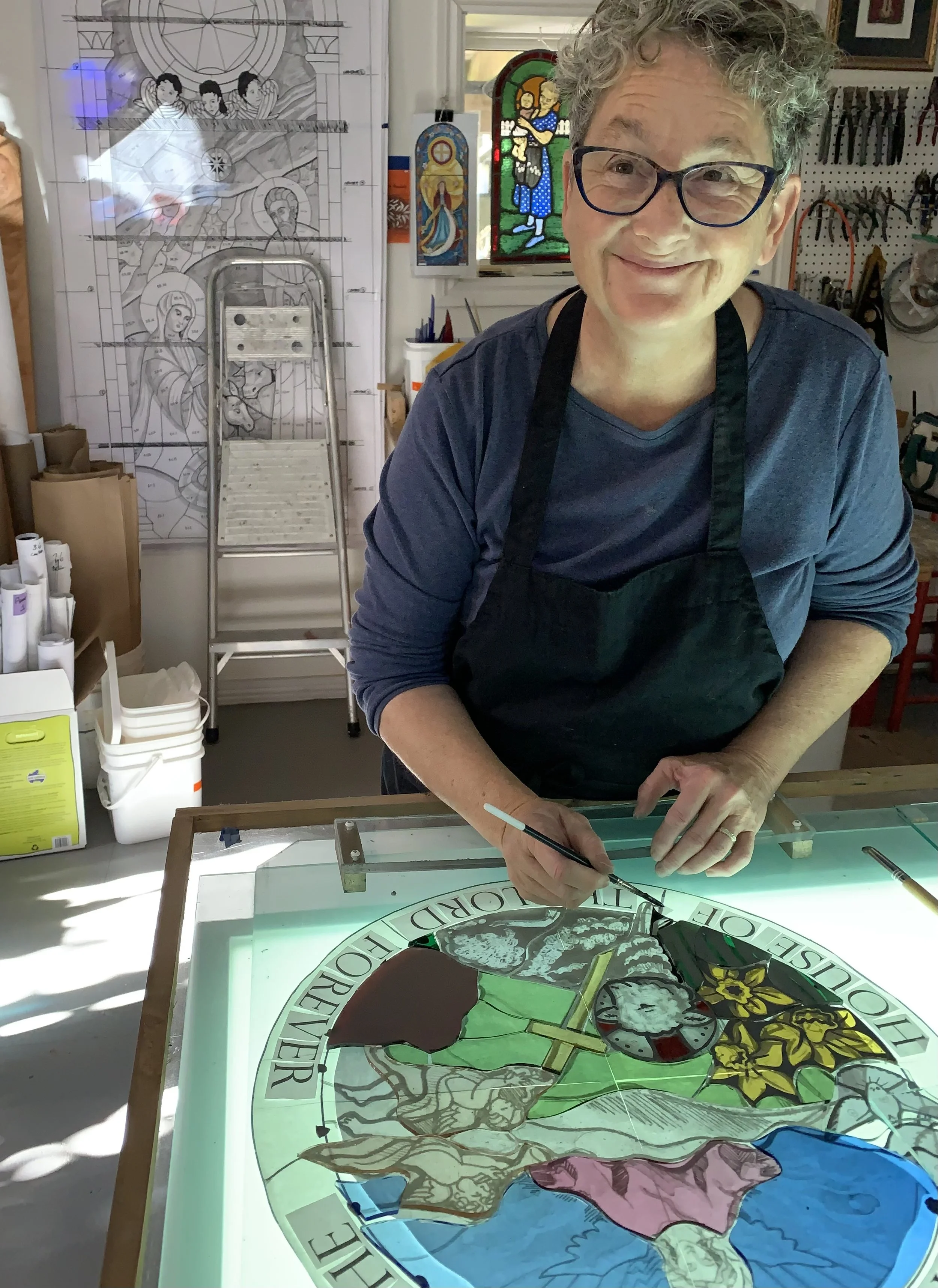Four Revolutionary Moves: Dancing with Craft
Throughout its long history, craft has been central to radical, utopian or counter-cultural initiatives directed towards effecting social and economic change. In the nineteenth century, William Morris’ socialist polemics addressed issues still relevant today: the negative impact of capitalism on labour, income inequality, and the importance of meaningful work. Early in the twentieth century, educators at the Bauhaus reconsidered relationships between industry and craft, striving to develop pedagogy appropriate for the new industrial age. The Sloyd movement, promoting educational reform through craft, was introduced to Canada from Britain at the start of the twentieth century. Reflecting an international agenda, Sloyd conceptualized craft as process rather than product, asserting that studio-based instruction developed more orderly and creative thinking, as well as manual skills. The Sloyd movement influenced art and craft education throughout the twentieth century and beyond.[1]
The 1960s and 70s were marked by political and social upheaval, which dramatically shaped craft practice. Counter-culture activists moved to rural settings, determined to create communities free from what they viewed as capitalism’s unsustainable greed and waste. In many cases, craft production provided both outlets for creativity and sustainable forms of economic activity essential to their survival. Inspired by the Civil Rights Movement, other activists contributed significantly to unionized labour and workers’ rights, focusing on fair labour and opening up debate between studio craft and factory work. Second Wave Feminists rethought concepts of gender, decrying as sexist the devaluation of craft as "women's work", and calling attention to inequities of gender, race, and class. The American Indian Movement worked to improve all aspects of Indigenous lives, including a renaissance of Indigenous arts and crafts.
Contemporary craft has learned from this past, intervening strategically to critique, undermine, and provide alternatives to dominant structures and agendas. Referred to concurrently as neo-craft, craftivism, or post-disciplinary craft, “politically engaged crafting practices. . . share a common ability and imperative to challenge the dominant economies in which they are situated.”[2] Craft production directed towards politically charged ends challenges the status quo through communal knitting circles, marches, and collaborative social projects. The politics of labour are questioned and rendered more transparent through craft-based performances and radical display.
…
Shona Rae, Bluebeard’s Castle/Death (XIII), detail, 2002/2007, sterling silver, fine silver (pmc), copper screen, beeswax, garnet, constructed with cast, formed, and pierced components, sculptural ring with articulation,. 11.5” x 2” x 2.2”; Death, 13”
Over the course of twenty years, Calgary goldsmith Shona Rae has created a series of twenty-two rings inspired by the Tarot and traditional fairy tales. Essentially small sculptures, the rings are impractically large—some over twelve inches tall--and constructed from diverse materials including gold, silver, bone femurs, petrified dinosaur bone, walrus tusk, vegetable ivory, and precious stones. Although each can be worn, both scale and complexity impose constraints, forcing the wearer to consider the artist’s intent. Rings are generally associated with power and authority, while fairy tales address the disenfranchised or those who have lost their power.[3] These age-old tales with their exaggerated characters and shocking plots provide ample material for a feminist artist with a knack for twisting power relations: Rae recasts female victims as empowered women.
…
Kablusiak, Listerine, 2018, soapstone, 7” x 3.5” x 1.5”
As with many other Inuit artists, Kablusiak highlights resilience, transformation and adaptation. Their carved objects foreground colonialist misconceptions of Inuit art, challenging what constitutes its contemporary form. Humour serves as an entry point to a serious critique of power relations embodied in binaries such as colonialism and decolonization, male and female, art and craft, in both settler and indigenous communities. In solidarity with many contemporary artists who inspire their work, such as Amy Malbeuf (Métis), Brenda Draney (Cree), and Cantonese-Canadian/Québécoise Florence Yee, Kablusiak’s work contributes to a multi-pronged approach to decolonization. Heather Igloliorte and Carla Tauton describe such an approach as “[situating] historical and indigenous arts together in a continuum as a means to emphasize the endurance of Indigenous histories of art production, which are not new and have always existed in the sovereign territories of Indigenous nations across Canada.”[5]
…
Lumel Studios, Long-term Care Home Workshop
Lumel Studios in Whitehorse combines a successful glass blowing studio with a ground-breaking social project. Known locally as “The Happiness Factory,” Lumel Studios is the brainchild of Luann Baker-Johnson, a graduate of ACAD’s glass program, and Mel Johnson, both of whom dreamed of using hot glass as a means to connect with people from all walks of life. Acknowledging that they operate within the traditional territories of the Kwanlin Dün First Nation and the Ta'an Kwach'än Council, Lumel's staff works hard to make all participants feel welcome. They support an open-door policy to allow people from all socio-economic classes to participate through watching, purchasing, or actually creating pieces on a glassblower’s bench with the support of accomplished staff. Those participants include Riverwalkers-Yukon street-people and disenfranchised youth-elders, seniors with dementia, individuals in rehab, as well as those with fetal alcohol syndrome. Lumel’s staff are trained to respond to drug overdoses and have Naloxone kits visibly hanging in the studio.
…
Lexie Owen, ODD JOBS, maintenance performance, 2017. Photo credit: Patrick McNabb
For [Lexie] Owen, the social is not simply background but is the essential material “stuff” with which she works. Although her diverse and open-ended projects might not immediately call craft to mind, craft is ever-present. Linking craft and social practice in their shared desire for a better world, she points to the utopian aspirations of the Arts and Crafts movement and to craft’s historic mission to make life better. Owen draws on the writings of Italian theorist Franco Berardi, who coined the term “futurability.”[7] Berardi asserts that while the field of the possible is limited by dominant power structures, this control is not complete. Alternative, more positive futures already exist, inscribed in the present, and it is the task of artists engaged in social practice to discover and make them visible.
[1] Jennifer Salahub, “Finding Direction: Craft Education and the Visiting Artist,” Relational Learning: ACAD Ceramics Visiting Artists: The First 3 Decades (Calgary: ACAD Ceramics program, 2017), pp.30-31.
[2] Anthea Black and Nicole Burisch, “Craft Hard, Die Free: Radical Curatorial Strategies for Craftivism in Unruly Contexts,” in Glenn Adamson, ed., The Craft Reader (New York: Berg, 2010), p.610.
[3] Jennifer Salahub, “Shona Rae: A Ring of Truth,” Shona Rae: Re-Imagined Narratives (Calgary: Nickle Galleries, 2018), p.3.
[5] Heather Igloliorte and Carla Taunton, “Continuities Between Eras: Indigenous Art Histories,” RACAR 42 (2017) p.8.
[7] Franco “Bifo” Berardi, Futurability: The Age of Impotence and the Horizon of Possibility (Brooklyn: Verso, 2017).
This article is an excerpt, and was published in full in the Spring/Summer 2019 issue of Studio Magazine.











